Intestinal Epithelial PTPN2 Limits Pathobiont Colonization by Immune-Directed Antimicrobial Responses.
Publication Year:
2024
PubMed ID:
39386684
Funding Grants:
Public Summary:
BACKGROUND AND AIMS: Loss of activity of the inflammatory bowel disease (IBD) susceptibility gene, protein tyrosine phosphatase non-receptor type 2 (PTPN2), is associated with altered microbiome composition in both human subjects and mice. Further, expansion of the bacterial pathobiont, adherent-invasive E. coli (AIEC), is strongly linked to IBD pathogenesis. The mechanism by which intestinal epithelial cells (IEC) maintain equilibrium between commensal microbiota and immune cells to restrict invading pathobionts is poorly understood. Here, we investigated the role of IEC-specific PTPN2 in regulating AIEC colonization. METHODS: Tamoxifen-inducible, intestinal epithelial cell-specific Ptpn2 knockout mice (Ptpn2 (DeltaIEC)) and control Ptpn2 (fl/fl) mice were infected with either non-invasive E. coli K12, or fluorescent-tagged mAIEC (mAIEC(red)) for four consecutive days or administered PBS. Subsequently, bacterial colonization in mouse tissues was quantified. mRNA and protein expression were assayed in intestinal epithelial cells (IECs) or whole tissue lysates by PCR and Western blot. Tissue cytokine expression was determined by ELISA. Intestinal barrier function was determined by in vivo administration of 4 kDa FITC-dextran (FD4) or 70kDa Rhodamine-B dextran (RD70) fluorescent probes. Confocal microscopy was used to determine the localization of tight-junction proteins. RESULTS: Ptpn2 (DeltaIEC) mice exhibited increased mAIEC(red) - but not K12 - bacterial load in the distal colon compared to infected Ptpn2 (fl/fl) mice. The higher susceptibility to mAIEC(red) infection was associated with altered levels of antimicrobial peptide (AMPs). Ileal RNA expression of the alpha-defensin AMPs, Defa5 and Defa6, as well as MMP7, was significantly lower in Ptpn2 (DeltaIEC) vs. Ptpn2 (fl/fl) mice, after mAIEC(red) but not K12 infection. Further, we observed increased tight junction-regulated permeability determined by elevated in vivo FD4 but not RD70 permeability in Ptpn2 (DeltaIEC)-K12 mice compared to their respective controls. This effect was further exacerbated in Ptpn2 (DeltaIEC) mAIEC-infected mice. Further, Ptpn2 (DeltaIEC) mice displayed lower IL-22, IL-6, IL-17A cytokine expression post mAIEC infection compared to Ptpn2 (fl/fl) controls. Recombinant IL-22 reversed the FD4 permeability defect and reduced bacterial burden in Ptpn2 (DeltaIEC) mice post mAIEC challenge. CONCLUSION: Our findings highlight that intestinal epithelial PTPN2 is crucial for mucosal immunity and gut homeostasis by promoting anti-bacterial defense mechanisms involving coordinated epithelial-immune responses to restrict pathobiont colonization.
Scientific Abstract:
BACKGROUND AND AIMS: Loss of activity of the inflammatory bowel disease (IBD) susceptibility gene, protein tyrosine phosphatase non-receptor type 2 (PTPN2), is associated with altered microbiome composition in both human subjects and mice. Further, expansion of the bacterial pathobiont, adherent-invasive E. coli (AIEC), is strongly linked to IBD pathogenesis. The mechanism by which intestinal epithelial cells (IEC) maintain equilibrium between commensal microbiota and immune cells to restrict invading pathobionts is poorly understood. Here, we investigated the role of IEC-specific PTPN2 in regulating AIEC colonization. METHODS: Tamoxifen-inducible, intestinal epithelial cell-specific Ptpn2 knockout mice (Ptpn2 (DeltaIEC)) and control Ptpn2 (fl/fl) mice were infected with either non-invasive E. coli K12, or fluorescent-tagged mAIEC (mAIEC(red)) for four consecutive days or administered PBS. Subsequently, bacterial colonization in mouse tissues was quantified. mRNA and protein expression were assayed in intestinal epithelial cells (IECs) or whole tissue lysates by PCR and Western blot. Tissue cytokine expression was determined by ELISA. Intestinal barrier function was determined by in vivo administration of 4 kDa FITC-dextran (FD4) or 70kDa Rhodamine-B dextran (RD70) fluorescent probes. Confocal microscopy was used to determine the localization of tight-junction proteins. RESULTS: Ptpn2 (DeltaIEC) mice exhibited increased mAIEC(red) - but not K12 - bacterial load in the distal colon compared to infected Ptpn2 (fl/fl) mice. The higher susceptibility to mAIEC(red) infection was associated with altered levels of antimicrobial peptide (AMPs). Ileal RNA expression of the alpha-defensin AMPs, Defa5 and Defa6, as well as MMP7, was significantly lower in Ptpn2 (DeltaIEC) vs. Ptpn2 (fl/fl) mice, after mAIEC(red) but not K12 infection. Further, we observed increased tight junction-regulated permeability determined by elevated in vivo FD4 but not RD70 permeability in Ptpn2 (DeltaIEC)-K12 mice compared to their respective controls. This effect was further exacerbated in Ptpn2 (DeltaIEC) mAIEC-infected mice. Further, Ptpn2 (DeltaIEC) mice displayed lower IL-22, IL-6, IL-17A cytokine expression post mAIEC infection compared to Ptpn2 (fl/fl) controls. Recombinant IL-22 reversed the FD4 permeability defect and reduced bacterial burden in Ptpn2 (DeltaIEC) mice post mAIEC challenge. CONCLUSION: Our findings highlight that intestinal epithelial PTPN2 is crucial for mucosal immunity and gut homeostasis by promoting anti-bacterial defense mechanisms involving coordinated epithelial-immune responses to restrict pathobiont colonization.



